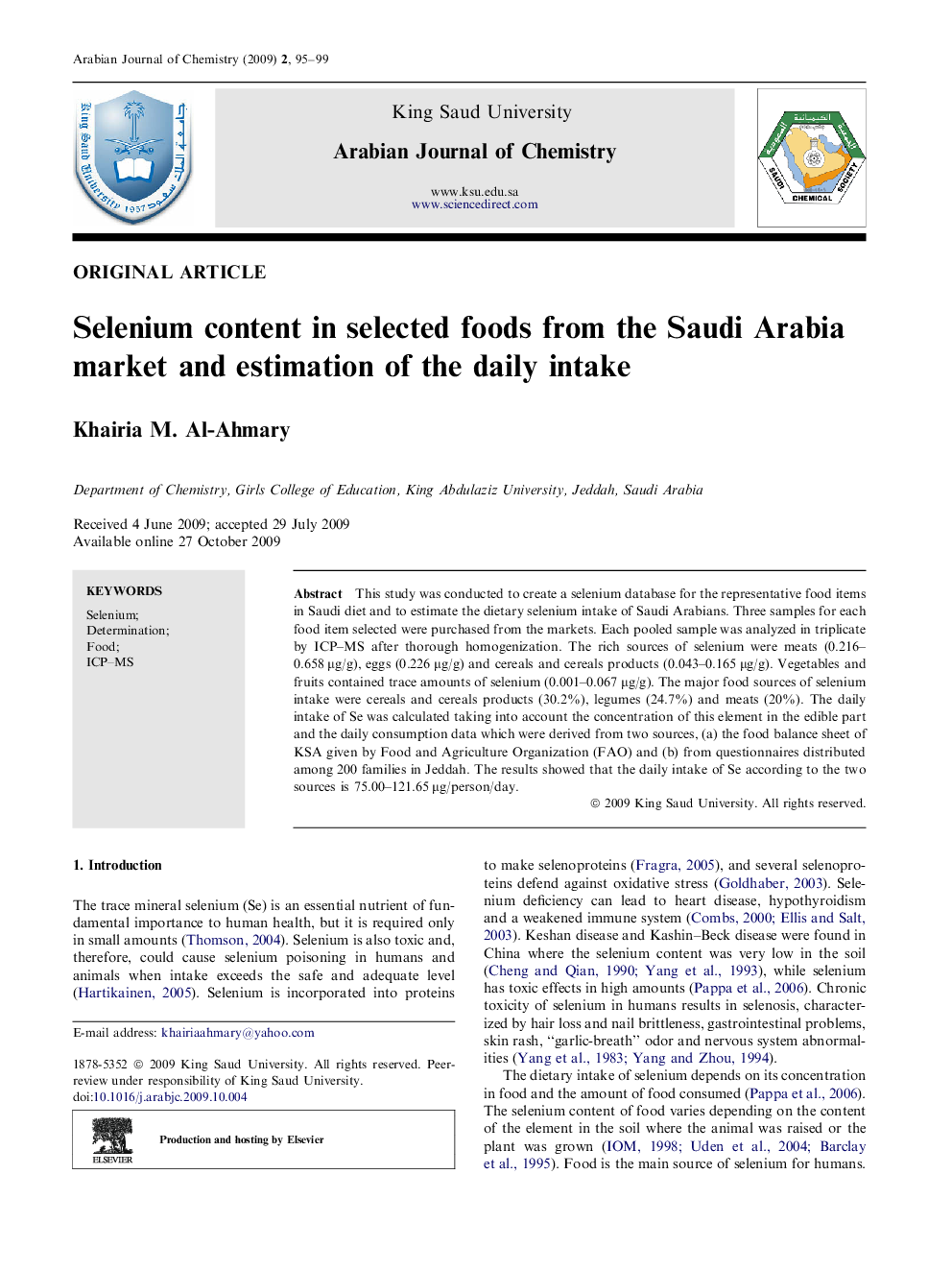| Article ID | Journal | Published Year | Pages | File Type |
|---|---|---|---|---|
| 1252911 | Arabian Journal of Chemistry | 2009 | 5 Pages |
This study was conducted to create a selenium database for the representative food items in Saudi diet and to estimate the dietary selenium intake of Saudi Arabians. Three samples for each food item selected were purchased from the markets. Each pooled sample was analyzed in triplicate by ICP–MS after thorough homogenization. The rich sources of selenium were meats (0.216–0.658 μg/g), eggs (0.226 μg/g) and cereals and cereals products (0.043–0.165 μg/g). Vegetables and fruits contained trace amounts of selenium (0.001–0.067 μg/g). The major food sources of selenium intake were cereals and cereals products (30.2%), legumes (24.7%) and meats (20%). The daily intake of Se was calculated taking into account the concentration of this element in the edible part and the daily consumption data which were derived from two sources, (a) the food balance sheet of KSA given by Food and Agriculture Organization (FAO) and (b) from questionnaires distributed among 200 families in Jeddah. The results showed that the daily intake of Se according to the two sources is 75.00–121.65 μg/person/day.
